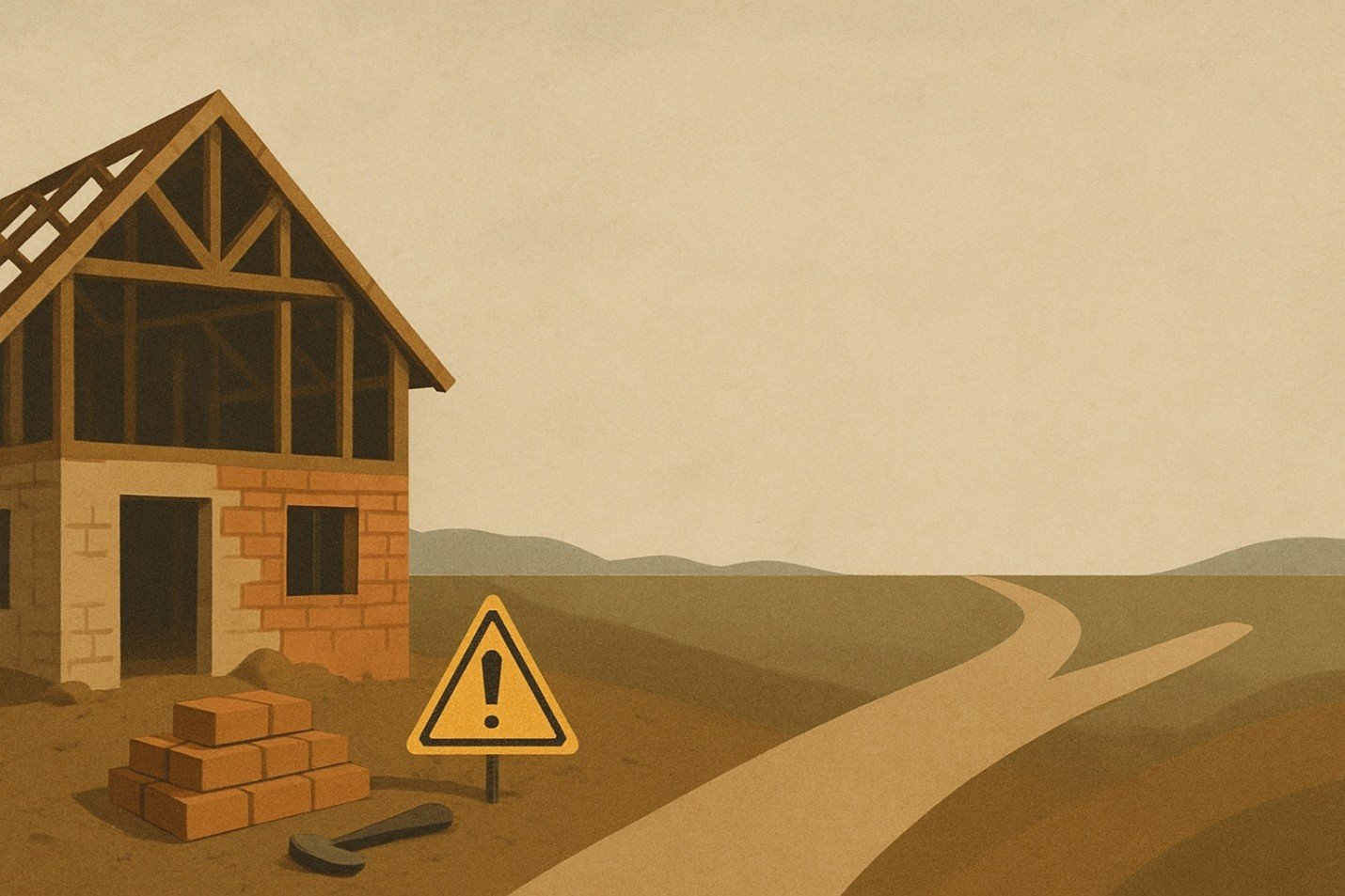Introduction
The joys of any construction project can easily become overwhelming. Do you know your exit strategy or even the signs of “hey, we should jump ship”? Sometimes we become so emotionally and mentally invested that we don’t realize the project is falling apart - until we’re isolated, clinging to false hope. So determined that it will recover. The following will help guide you to prevent the collapse of a project before it even starts, and most importantly, you can learn the wisdom of when to walk away. Those difficult decisions become easier to accept because you understand the principles regarding the risks, when it is no longer best to move forward as a homeowner.
Why You Need a "Walk-Away Point"
These principles apply to all types of home projects, no matter how minor or small you deem them to be. Strategies for managing risk, margin, scope, skillset, and time exist. As a homeowner, you should be able to assess if these key indicators are being met. Your “walk-away point” has to be a predefined set of conditions you had decided on before the start of the project. These conditions are not being met, so you know the risks or cost now outweigh the benefits. It is important to have the projects stay in alignment with your original goals. Hear me out; it is not just about giving up; it’s about a strategic approach and perseverance. Going down this route limits substantial potential losses or prevents a worse outcome, losing everything.
Why Define Your Walk-Away Point Early?
Residential construction projects go through various phases: planning, design, construction, and operation. The key phase to pull out is during the planning phase, where you have the greatest influence on direction, cost development, and the outcome of the overall project. If you decide to drag along, it becomes a lot harder and expensive to jump ship due to legal obligations. So, defining your walk-away point early allows you to set clear boundaries and know your limits and non-negotiables before you are emotionally invested or under pressure. This may look like the project is going to take two years vs the expected 10 months to complete, or the budget needs another hundred thousand dollars. Manage Expectations, shoot for the moon, they say, if you miss, you land among the stars! Okay, let's be real here; we should never have missed the moon! Understand your project scope and the outcomes you want. If you expect a five-bedroom house, the result should reflect that. Keep in mind the logistics; if you own a small lot, the reality may be for only two bedrooms. Always check in about what to expect. Proactive Decision-Making instead of flying off the handle or even shutting down to unexpected problems, have a framework or plan for making a rational decision based on your preset conditions. For example, contractors say we do not have the requested purple paint color, but yellow is available. Your reaction could be A. We will not paint at all, or B. Instead of painting, we will do purple wallpaper! Do not settle for yellow if that is not what you want. These types of changes are common in a project, so it is vital to improve communication. Knowing your own limits can help you communicate more effectively with your designer, contractor, partners, and family about your priorities and concerns. For example, here are some statements you could use
“Before we dive too deep into the designs, it is important we clarify our top three priorities…..”
“We are comfortable spending up to $_____, but beyond that, we will need to pause and re-evaluate.”
“Can we agree to have weekly updates, even if it’s just a quick status email? That helps us feel grounded.”
When Might You Reach Your Walk-Away Point?
I mentioned a few examples already, but here are some of the key areas:
Budget (Cost): This is often a major driver. Define your absolute maximum spending limit, including a realistic contingency for unforeseen issues.. Your walk-away point might be triggered if the projected final cost exceeds the initial goal. Early estimates, like a Rough Order of Magnitude (ROM) estimate, can provide an initial baseline and determine feasibility. As design progresses, more detailed estimates should be provided. Remember, as the project continues, the more complex the walk-away point becomes, the choice you want to make vs being forced to walk away.
Schedule (Time): Establish a deadline by which the project absolutely must be completed. Project delays do happen. If the moon is a destination and you are landing among the stars, reconsider the trajectory path. While some delays might be acceptable, define the point at which delays become critical and unacceptable. Your walk-away point could be reached if it becomes clear the project cannot be completed.
Design and Scope: Define the essential elements of the project and functionality. What are the non-negotiables that must be achieved? Is it the Purple Paint?! Define the scope boundaries clearly. Your walk-away point might be reached due to unforeseen conditions, cost escalation, or other factors. The final project should align with your initial vision.
Risk Tolerance: Some people are built for the rush, and others play it safe. Risk is defined as exposure to danger, financial loss, and harm. Some risks are quantifiable, while others are subjective. Consider your tolerance for uncertainty, financial exposure beyond your budget, and the stress associated with managing problems. Recognizing, assessing, and managing risks is crucial. Trust your gut; your instinct has probably protected you more than you admit.
Steps to Take Before Approaching the Point
Reaching your predetermined walk-away point isn't necessarily tied to a specific event, but rather to the likelihood or certainty that one or more of your conditions becomes critical to failure. Solid planning and proactive management significantly reduce the likelihood of reaching a walk-away point. During the initial planning phase, define precisely what you want, why, and your budget and schedule limits. Do your homework and due diligence. Assess the feasibility of your project idea against your constraints early on. Select qualified designers, consultants, and contractors carefully. Consider the project delivery method and contract structure that best suits your project's needs and your own expertise. Since a contract is a legally binding document, focus on the key clauses related to payment, scope, schedule, changes, risks, and dispute resolution. Identify the risks and develop action plans for managing them. Don't fall victim to optimism bias, which can downplay risks. Stay engaged, stay informed, and monitor progress against the budget and schedule.
What to do if You Are feeling the pressure to Walk Away
If problems escalate and you believe you might be approaching your predetermined walk-away point, it's time for a serious check-in. Let’s huddle up and gather your team. Re-evaluate how far off-course the project is becoming. Ensure you have a clear picture of the project status and progress. You can review the contract, change orders, and communicate to collect this information. Suppose the situation involves significant financial or contractual issues. In that case, consulting with a construction consultant or legal professional who can provide impartial advice based on your specific circumstances and contract terms may be prudent. After you have done this, it is time to make a decision about whether you have reached your walk-away point. Stick with it and do not waver; it will play out in your favor in due time.
Conclusion
Defining your walk-away point isn't about planning for failure; it's about applying risk management and strategic thinking to your home project. By having a clear vision at the start, you empower yourself to make informed decisions throughout the project lifecycle and protect your investment and well-being. I believe in you. Now that you have the tools and techniques, I have more confidence that you will land on the moon after all. Be sure to sign up with your email below so I can keep you informed!


